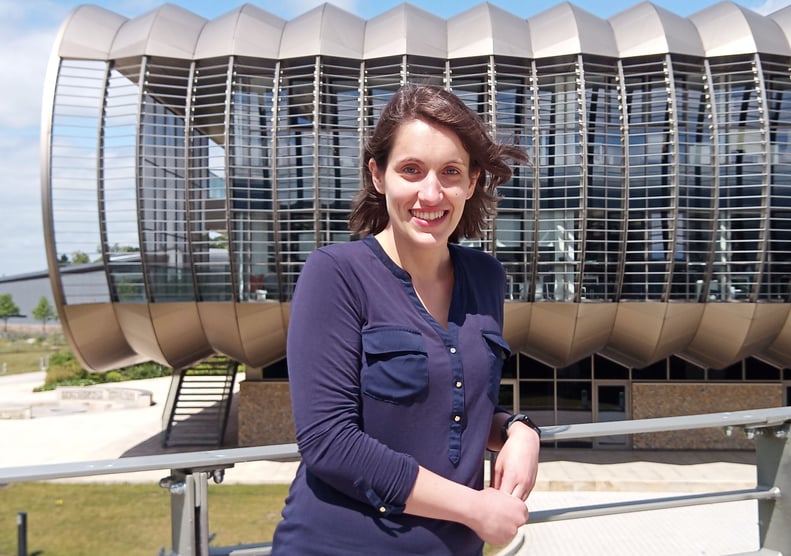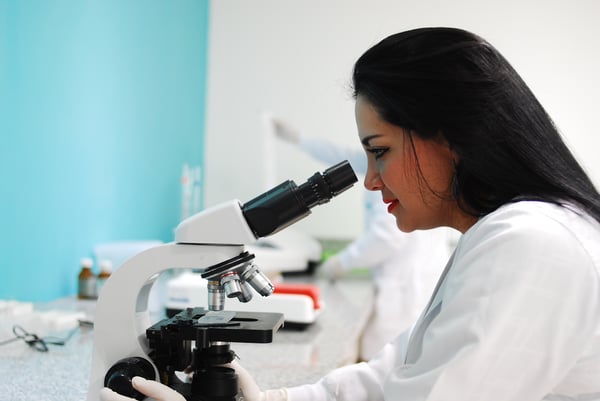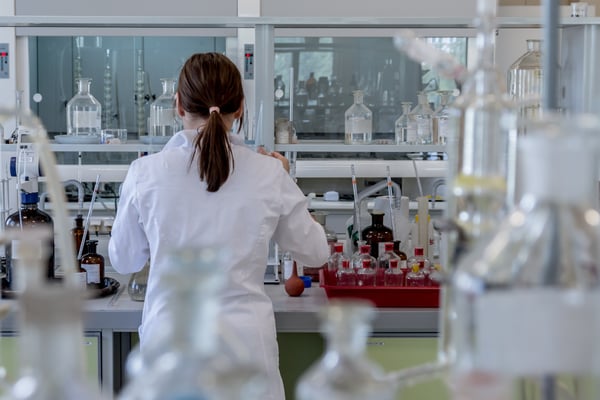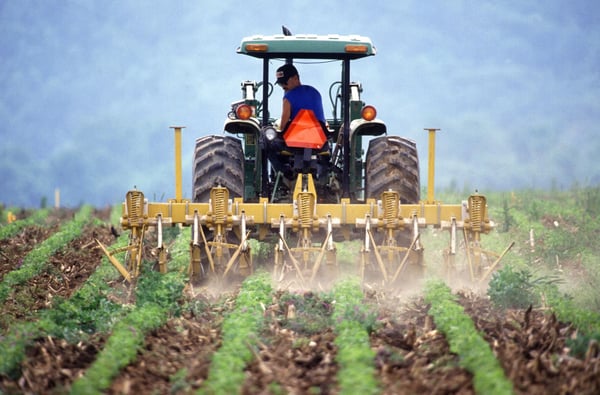Is the microbiome the new frontier for scientific discovery?: Q&A with Greet De Baets
Greet is a bioinformatics developer at Eagle Genomics. To celebrate World Microbiome Day, she shares her thoughts on microbiome research and where she thinks the field will lead in the future.

"Data analysis can make it easier to draw-up microbiome hypotheses."
Q: What is your role at Eagle Genomics?
I am a bioinformatics developer, so I have a background in both biotechnology and bioinformatics and I try to combine these skills here at Eagle. Quite often my day is spent coding! I contribute to our e[automateddatascientist] software platform by helping build the internal knowledge base. My scientific background allows me to build the software, keep up to date with microbiome research and help address the ways Eagle can innovate in this area.
Q: Why is microbiome research generating so much interest?
Until relatively recently the microbiome and bacteria were regarded by the public as an unhygienic thing. People didn’t want to be exposed to microbes and perceived bacteria as being ‘bad’. Then a real shift in our thinking started to happen and people began to appreciate that the microbiome has important health benefits for all of us.
A microbiome is the population of bacteria, viruses and fungi which live in a specific environment called a biome. All of us have skin and gut microbiomes with a specific composition. You can’t see these microorganisms because they are so miniscule, the only way you can see them is if you take a swab and grow them on a plate. However, looking at the plate through a microscope only allows you to see a small fraction of that microbiome population.
 Until recently it was only possible to observe a fraction of a microbiome under the microscope.
Until recently it was only possible to observe a fraction of a microbiome under the microscope.
Up until about 10-15 years ago, the major problem with this method was that most of the microorganisms couldn't survive, as it’s very difficult to grow a full population unless you can reproduce very specific conditions. But then there was the revolution of sequencing technology. Because of this it became easy to take a swab, sequence it and get a much more comprehensive picture of the species present within that microbiome.
Without sequencing there would never have been these opportunities in the microbiome field. Since then there has been a paradigm shift from thinking that bacteria are ‘bad’ and ‘unhealthy’ to being good for your health. There have been many studies into human health that show microbiome composition is associated with disease. Most famously it has been associated with inflammatory bowel disease (IBD), as well as other conditions including skin disease and neurological diseases such as depression and autism.
Q: Researchers know that the human microbiome plays a key role in our health but don’t yet know how that relationship works. How can bioinformatics/data analysis help develop our understanding?
First of all we need more data, so we need a large number of patients taking part in microbiome studies. From that aspect, bioinformatics and data analysis are the main drivers for insight. Without proper pipelines or properly scalable software and data analysis, researchers would never be able to analyse the vast amount of data available.
However, the main challenge with microbiome and disease is that it is very hard to identify true causation. Researchers can identify changes within a microbiome’s composition and relate them to health outcomes, but it’s hard to say whether these changes in microbiome are the cause of a particular condition. The way data analysis can help is to make it easier to draw-up a hypothesis. Analysis will help empower researchers to generate a hypothesis addressing if a specific strain, or group of strains, may cause or contribute to a specific disease.
Clearly described hypotheses are then testable in the lab. For example, there are studies that show the composition of the microbiome can impact the success of cancer therapy. There's huge potential there, but I think more studies are necessary to show if it is really possible to relate treatment success to particular strains present in the human gut microbiome.
I think data analysis alone will never answer all of these questions, we’ll always need experimental validation of these hypotheses within a lab environment.
 Both data analysis and laboratory research are required to validate microbiome hypotheses.
Both data analysis and laboratory research are required to validate microbiome hypotheses.
Q: With the appearance of ‘microbiome enhancing’ diets and products, should we believe the hype?
I think there are two elements at play here. One is the hygiene hypothesis; the idea that people shouldn’t be afraid of the microbiome or worried about being exposed to benevolent bacteria. Early exposure to microorganisms does have health benefits, as it helps build your immune system.
Secondly, regarding probiotics and the kinds of products focused on the gut microbiome, we have reason to be very optimistic as there are a lot of good studies that show it is possible to enhance the health of the gut microbiome. However, I believe it will take another 10-20 years to really be consolidated, evidenced and applied to medical practices.
Q: What is the relationship between antibiotic resistance and the microbiome?
It’s important to acknowledge that antibiotics are one of the best inventions ever made; I would never want to go back to a time where if you have a cut there is a risk of dying because you might pick up an infection!
There have always been some bacterial strains that are capable of protecting themselves against antibiotics, either through picking up resistance genes (as bacteria can easily transfer genetic material between themselves) or genetic mutation. Because of increased antibiotic usage, resistant bacteria are continuously exposed to antibiotics, giving them the opportunity to thrive in the absence of non-resistant strains.
Another factor involved in antibiotic resistance is the depletion of the gut microbiome when using antibiotics. A healthy person has a highly diverse microbiome but, once you start antibiotic treatment, most strains, both good and bad, will be affected by the antibiotics and die out. Because your gut is now an environment that’s completely exposed and ready to be recolonised by other bacteria once you stop taking the antibiotics, your whole population changes. There are currently studies looking into minimising the impact of antibiotics on your gut microbiome population and how to recover a healthy microbiome after antibiotic treatment.
Our use of antibiotics is also having a huge impact on the microbiome present in our rivers. As we pass waste carrying antibiotics, that waste water filters through to our rivers and kills off microorganisms that are vital to those ecosystems, leaving behind antibiotic resistant strains.
Q: So, outside of humans, microbiomes present in the environment (e.g soil and ocean) tell us a lot about the health of ecosystems. Can understanding these biomes contribute to a sustainable future?
Soil and plant microbiomes are important factors in crop yield that have been overlooked in the past. Misuse of fertilizer and chemicals in the agricultural sector has had a big impact on the health of the soil microbiome. However, because of new regulations, there are signs of progress. Some companies are already focusing on the importance of the soil microbiome by coating their seeds with a specific microbiome to ensure crops have a healthy kick-start. These companies even claim they see an improved crop yield, just from using the right soil microbiome composition.
So there are a lot of exciting things happening, but we still need further research to clearly evidence and validate the claims made surrounding the microbiome.
 A healthy soil microbiome is crucial for crop yield.
A healthy soil microbiome is crucial for crop yield.
Q: How can the technology being developed by Eagle Genomics help researchers understand more about microbiomes?
At Eagle we contribute on multiple levels. Our pipelines make analysis of raw data much easier for scientists to interpret and our knowledge platform also makes the integration of different datasets easier by matching up specific results with publicly available data and other omics data types.
Change is also required in the microbiome research field. In genetics studies there is already a lot of standardisation applied to the methodologies used to sequence a sample etc. In microbiome research we are trying to catch up with the use of standardisation by answering the questions; what is the best approach for analysing a sample? Which metadata needs to be captured? Eagle has the potential to help with the setting of these standards in order to enhance data integration. It’s not going to be easy but we’re excited by the challenge!
Q: What are your aspirations for the future of microbiome research?
I hope all these cool applications work out for medicine. If we can identify links between the microbiome and conditions such as depression and autism and come to truly understand those relationships in a causal way, that would be incredible. There is huge potential and, if these connections prove to be causal, we can really improve the health of human beings and our ecosystems. That's why it's crucial for research institutions and industry leaders to invest in this area, to help us identify potential relationships as soon as we can.